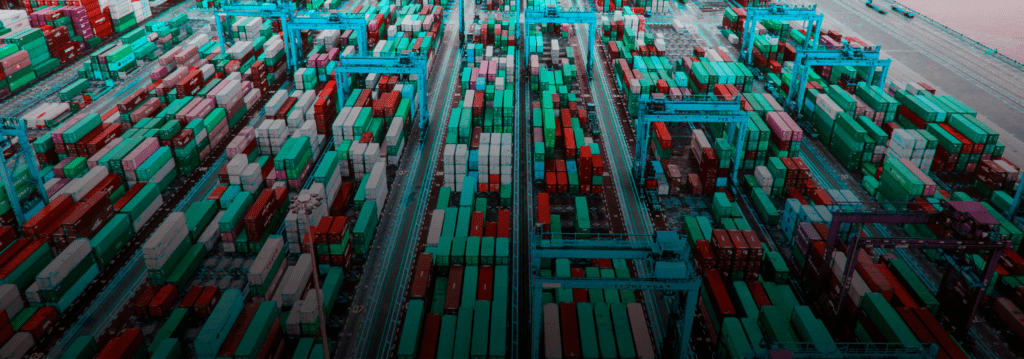The development and implementation of new technologies is something that entrepreneurs are used to doing, but not all attempts work first time. When pressed, those pioneers will admit that they learnt more from failures – their own and others’ – in order to succeed. This article presents one such lesson learned, one stemming from personal experience. In it, Len Pannett discusses a business venture which aimed to solve a problem many supply chains have today – that of supply chain visibility and traceability – and how a recent technology development promises to solve what hasn’t been possible before.
Some years ago I worked with a great team of software engineers and developers in a start-up that had an altruistic idea: to provide a platform for tracing any piece of wood back to the source tree it came from, so called “back to stump” traceability. That would assure the timber supply chain and demonstrate that it was, in every way, legal, having had the necessary duties paid and documentation issued along its journey. A key driver for this was the European Union’s FLEGT (Forest Law Enforcement, Governance and Trade) legislation, an ambitious piece of regulation that aims to tackle illegal timber by requiring that all wood entering the EU is legally sourced. This is no small task: illegal timber represents some US$ 15 billion each year in lost tax revenues [1], not to mention the environmental and social damage that it causes. Each year, the EU imports around 2 million cubic metres of tropical timber alone [2]. Providing traceability for that sector is a highly complex challenge, requiring a mixture of technology, changes in behaviours, in legal systems and in policing. The team I was with was focused on the first of these.
The technical solution was shaped by the circumstances of the tropical timber supply chain:
- It originates in remote parts of many countries, often in developing world economies, with unreliable power and connectivity and typically degraded infrastructure, low levels of education and capacity generally.
- It involves many entities along the chain, from logging companies, forestry commissions, timber mills, logistics companies, tax authorities and workshops
- The source material at the start of the chain – a tree – undergoes numerous physical transformations along the supply chain. It is typically divided into several sub-products – logs – which are then processed further into smaller sub-units, such as planks, or turned into bulk materials like pulp. Each of those needs to be traceable back to source.
- The administrative burden along the way is very paper-based, with paper bills of lading, paper licenses, and so on.
- Compliance with due process is often less than full, either through a lack of training, a lack of engagement or poorly aligned incentives.
To provide assurance, a legal entity must be able to look back up the chain from any point along it and obtain unimpeachable information of the legality of the source and that all admin was correctly processed along the way.
The solution that we developed comprised of barcode readers on trees and logs, handheld readers, laptop terminals and cloud-based servers. It involved a software product that would take into account the lack of continuous connection to terminals and handheld readers, the distributed supply chain, and process and protect data to provide the characteristics that were needed.
Sadly, like many ambitious and well-intentioned start-ups, that venture failed. It did so for a variety of reasons and a critical one lay in the system that was being developed. It was too complex, too cumbersome, too bespoke. It needed to provide a single data source recording every supply chain transaction in order to be seen as a trusted authority, able to store, dynamically maintain and report that data. That led to it being too expensive for customers, too costly to develop and too unstable for users. Within a few short years, the company closed. Of course, that was tragic for those who worked there. It was particularly heart-breaking as we all saw the potential: we saw that the need for traceability, for supply chain assurance, was shared by so many other supply chains, which all faced issues of compliance, of unsustainable practice, of corruption, of slave labour and a range of other threats. Cocoa and coffee companies want assurance of source, assurance that child labour wasn’t employed in harvesting the pods and beans. Biofuel companies want assurance of sustainability to ensure that their bioethanol and biodiesel aren’t inflicting environmental damage. Pharmaceutical companies want assurance that trial drugs were correctly provided, used and the results recorded for each individual dose. Supermarkets want to provide customers with evidence of source of their products. And all want to insulate themselves from the risk these threats pose to brand value, reputation and consumer trust. There is clearly a case for the type of venture that we had.
20/20 Hindsight
Looking back now, I can see that what we trying to do, for the greater good and with an attractive list of commercial benefits as it was, was not going to be solved using the approach that we had. Since then, though, a new technology has emerged that has a great potential to solve it: blockchain. At the time my previous company was founded, blockchain was still a very academic idea from the early 1990s, one that didn’t have a practical application. That first use wouldn’t come until Satoshi Nakamoto, the as-yet-unknown author, published his renowned paper in 2008, “Bitcoin: A Peer-to-Peer Electronic Cash System” [3], in which he described the use of blockchain to enable a new form of currency. It wasn’t until after that previous company failed that the potential for blockchain in supply chain applications began to emerge.
If I were to do it all again, then blockchain is undoubted the better way to go. It offers precisely the sorts of characteristics that we were trying to achieve:
- It is an electronic ledger, removing the need for paper
- It is a distributed ledger, allowing multiple parties to access and interact with it
- It is immutable, using cryptography and mathematics to ensure that information within it cannot be illicitly altered, and that data cannot be altered without the knowledge of all stakeholders
- It provides real-time track and trace, allowing for audits throughout the supply chain
- It forces those interacting with it to comply with the due process, and identifies where they are now in virtually real-time
In the timber sector, that means that as a tree is identified as being legal, with permission to be cut down, as it is then divided into logs, as each log is taken to a timber mill, as the mill turns it into planks, as those are then transported and shipped to a workshop, as the permits are issued and collected, as taxes and duties paid, as clearances given, the information about all of those can be secured on the blockchain, ready for review at any time by anyone involved in the supply chain with the right permission to do so. Contracts can be settled, monies can be exchanged, and all managed quickly, with fewer resources and in an independent manner agreed by all parties.
Continual Challenges
Although blockchain would so obviously provide the platform that is needed, it isn’t the solution to every challenge that those sectors face. For example, before they can be cut down, trees must be correctly identified to provide assurance that they are precisely the right tree in the right place. That is typically done using barcode tags, which opens them to being illicitly replaced or accidentally moved. Innovation is needed and here, much as in industrial supply chains, IoT devices may well have a role to play. Tags which cannot be so easily relocated, which perhaps use GPS and DNA information, can improve the level of assurance, albeit at a price. Similarly, the handling of paper-based documents along the timber supply chain opens the entire process to illegal behaviour as is prevalent in many regions. Replacing those with electronic documents reduces, if not eliminates, that risk, as well as itself facilitating the application of blockchain and the accruing of those benefits.
Moreover, like in past efforts, blockchain requires the use of IT, of software, and that requires training and access to systems to get data and information into and out of the blockchain. This isn’t just something for the timber companies and Forestry Commissions: it applies to all the entities that will interact with the electronic ledger. The effort and resources required to deliver those must not be ignored and add to what it takes to implement the solution successfully.
Blockchain is still a new technology, and it is presently riding a wave of hype, with many companies invoking all manner of benefits from a wide range of uses. Cut through the hype and there are some solid good news stories. Many firms are already trialling it to provide the sort of supply chain assurance that the timber, food commodity and other sector clients sought when they came to my former company. Coffee companies like the Coda Coffee Co in Denver, CO and Moyee Coffee in Ireland, both used Bext360 to enable blockchain supply chains. Microsoft’s joint venture, Ardents NovaTrack, used it to track pharmaceuticals in transport. The diamond producer, De Beers, announced in 2018 that it had tracked 100 diamonds from mine to retailer using blockchain. Lessons learned from those and other cases are being shared in conferences and through professional bodies like the Council of Supply Chain Management Professionals (CSCMP).
Delivering Promise
Blockchain cannot solve all supply chain problems and there is still some way to go before an off-the-shelf solution becomes available. That said, it does provide the sort of capability upon which supply chain assurance and improvements to supply chain efficiency can be garnered. The challenges must not be ignored, and implementation remains a complicated task involving a wide range of entities and people. However, done properly, executed correctly, blockchain can bring considerable benefit to supply chains and those touched by them.
Sources:
[1] EU Flegt Facility Illegal logging
[2] CBI Trade Statistics: Timber in Europe
[3] Bitcoin: A peer-to-peer electronic cash system
Subscribe and receive relevant content on topics of your interest!
About the author
Len Pannett is our Managing Partner based in London, UK, and has over 25 years’ experience of helping engineering, manufacture and technology organisations to implement operational transformations. The President of the UK Roundtable of the Council of Supply Chain Management Professionals (CSCMP) and a Fellow of the Institution of Engineering and Technology (IET), he is an award-winning speaker and author on the impact of 3D printing on supply chains.


